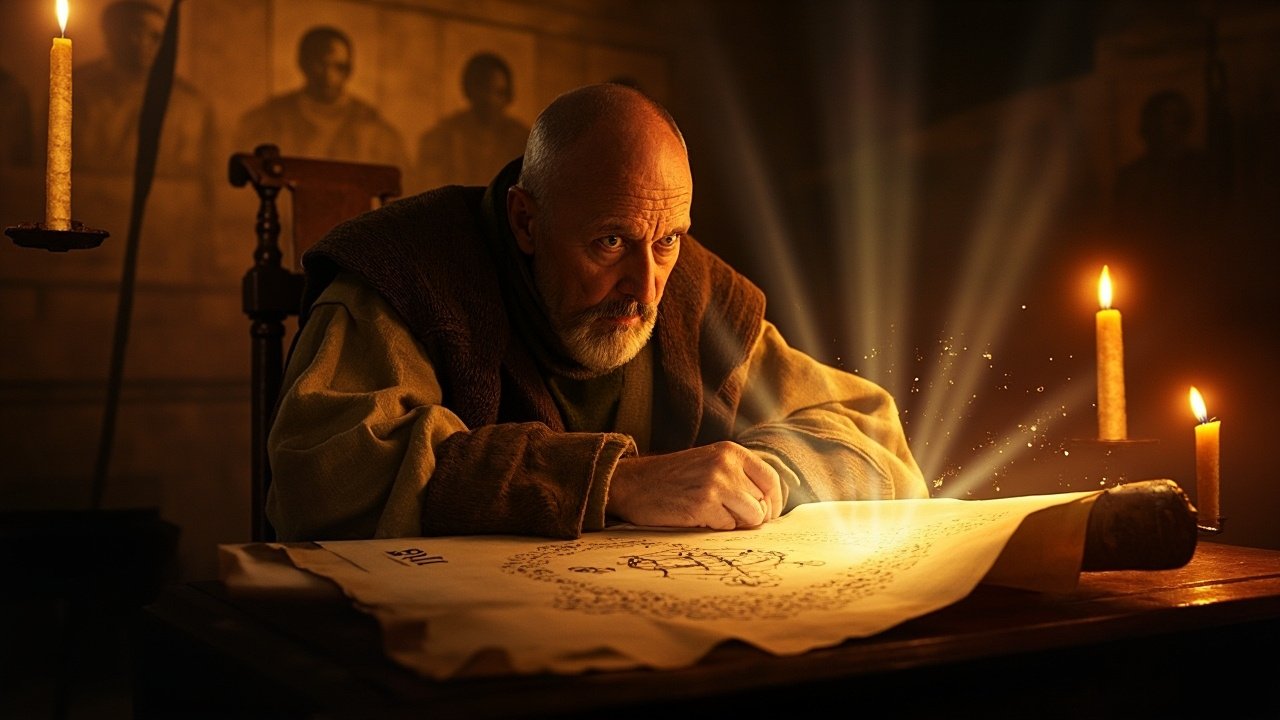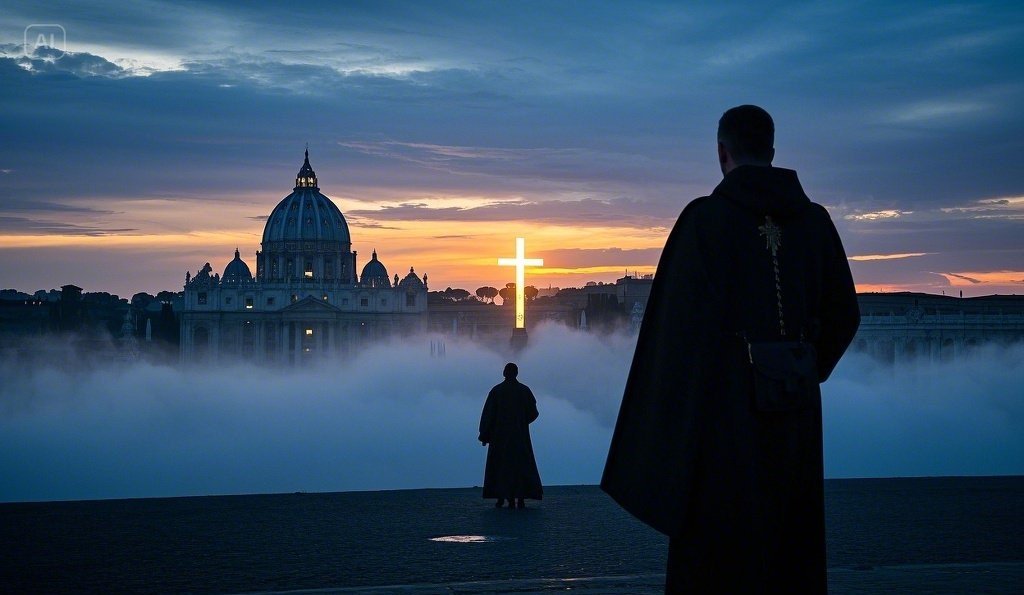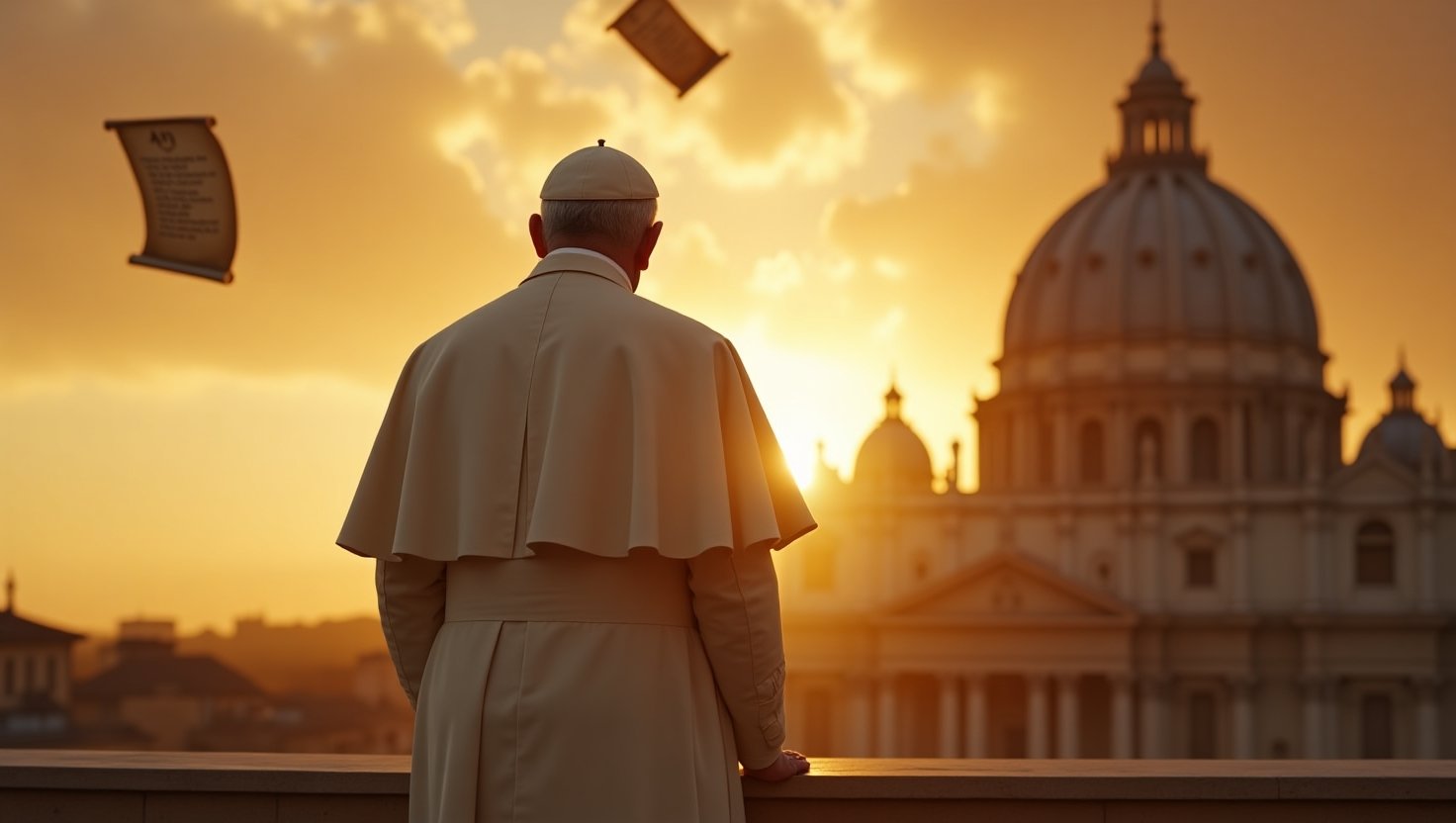
The Final Pope Prophecy: Is This the Moment?
For centuries, whispers of prophecy have stirred around the name Malachy—a 12th-century Irish archbishop whose chillingly precise list of popes has both fascinated and terrified theologians, historians, and believers across the globe. And now, with the world in spiritual transition and Pope Francis’s death marking the final name on the ancient list, we must ask: could we truly be living in the days of its final fulfillment?
In this article, we explore the origins of the Prophecy of the Popes, its alignment with history, its spiritual implications, and why this moment—right now—might be the one Malachy saw., we explore the origins of the Prophecy of the Popes, its alignment with history, its spiritual implications, and why this moment—right now—might be the one Malachy saw.
Who Was Saint Malachy?
Saint Malachy, born Maelmhaedhoc Ó Morgair in 1094 AD in Armagh, Ireland, was a deeply respected Irish Catholic archbishop, monk, and reformer. He served during a time when the Irish Church was entangled in internal division, disorganization, and a lack of central authority. Malachy was appointed Archbishop of Armagh in 1132 and dedicated his life to spiritual renewal, church reform, and monastic discipline.
He was a close friend of Saint Bernard of Clairvaux, a prominent French abbot who would later write Malachy’s biography. Through Bernard, we learn that Malachy performed miracles, exorcised evil spirits, and had prophetic visions. He was credited with restoring proper liturgical practices to the Irish Church and realigning Ireland with Roman Catholic authority during a time of fragmentation.
Saint Malachy died in 1148 at Clairvaux Abbey in France, in the arms of Saint Bernard himself. He was canonized by Pope Clement III in 1190, becoming the first Irish saint formally recognized by Rome.
The Mysterious Prophecy
Legend holds that during a visit to Rome in 1139, Malachy received a vision from God showing him the future line of popes. In this vision, he reportedly saw 112 future pontiffs, each represented by a short Latin phrase.
These phrases were not made public until 1595, over 400 years later, when Benedictine monk Arnold de Wyon published them in a book titled Lignum Vitae. This delay has caused debate: some argue the prophecy was a later forgery, while others believe it was divinely concealed until an appointed time.
Despite skepticism, the prophecy gained traction because of its eerily accurate descriptions of papal attributes, names, symbols, and major events. Whether it was divine revelation or uncanny coincidence, its undeniable relevance to each pope since the 16th century keeps it alive in theological circles.
Why Is Saint Malachy Still Relevant?
Saint Malachy is not just relevant because of a list of popes. He is important because of what he symbolizes:
- A call to spiritual reform in corrupt or confused times.
- A bridge between tradition and divine revelation.
- A man of God who moved in miracles, prophecy, and apostolic authority.
In today’s age of spiritual awakening, Church controversy, and global instability, his voice echoes again:
“Prepare. Return. Reform. Because the time is near.”
His prophecy calls us not to panic, but to align. Not to fear the future, but to live prepared for it.
A Beautiful Coincidence — Or Divine Wordplay?
Malachy passed away in Clairvaux Abbey—a name that translates from French as “clear valley.”
It is strikingly similar to the root of the word clairvoyant (from clair = clear, voyant = seeing), meaning “clear seeing” or prophetic vision.
While not etymologically related, the symbolism is poetic:
- Clairvaux: a clear spiritual resting place
- Clairvoyant: clear spiritual vision
Malachy, a prophetic seer, passed in a place that represents spiritual clarity. A coincidence? Or a gentle nod from God that his life, death, and legacy would be a reminder to all:
“You are entering a clear valley. Your spiritual sight is being restored.”
We are in a time when discernment is essential—and Saint Malachy’s legacy reminds us to see with clear eyes and trust the divine timing of God’s unfolding plan.
What Does the Prophecy Say?
The prophecy lists 112 popes. Each is described by a brief Latin motto. Astonishingly, many historians agree that these mottos have aligned uncannily well with actual events, papal coats of arms, birthplaces, or key themes from their reigns.
The final pope is described simply as:
“In the final persecution of the Holy Roman Church, there will sit Peter the Roman, who will pasture his sheep in many tribulations. And when these things are finished, the city of seven hills will be destroyed, and the dreadful Judge will judge his people. The end.”
This chilling closing has led many to believe that the 112th pope will preside over the end of the Catholic Church as we know it or the return of Christ and final judgment.
Are We On the Last Pope?
Many believed that Pope Francis—the 266th pontiff of the Catholic Church—was the final pope in Malachy’s vision. Why?
- He was the 112th on Malachy’s list.
- He was the first Jesuit pope, first from the Americas, and first to take the name Francis, evoking Saint Francis of Assisi, a man associated with reform and end-times themes.
- His papacy unfolded during a time of global upheaval, including pandemics, rising moral relativism, and increasing division within the Church.
With Pope Francis now passed, many believers are revisiting Malachy’s prophecy with renewed urgency. The question now shifts from “Are we on the last pope?” to “What happens next?”
Some argue that the prophecy’s final line was not meant to name a successor but to signal the beginning of judgment, tribulation, or transformation within the Church and the world. If Malachy was right, we are now living in the prophesied aftermath—a time of reckoning, reformation, and divine transition.
Why Is This Relevant Now?
Recent global events have awakened a hunger for meaning, prophecy, and divine timing:
- Pandemics and war echo biblical birth pains.
- Moral confusion and division have infiltrated religious institutions.
- Spiritual warfare feels heightened, as many feel they’re caught in a battle between darkness and light.
And now, in 2025, with talk swirling about the health of Pope Francis, the decline of traditional faith, and a hunger for a new kind of spiritual leadership, Malachy’s prophecy feels less like ancient folklore and more like a divine countdown.
How Does This Tie to the Bible?
Though the Prophecy of Malachy is not found in the Bible, it mirrors several scriptural themes:
- Matthew 24:6-8: “You will hear of wars and rumors of wars… all these are the beginning of birth pains.”
- Revelation 13 and 17: End-time leadership, the beast, and corrupt religious power structures.
- 2 Thessalonians 2:3-4: “The man of lawlessness… will exalt himself over everything that is called God or is worshiped.”
- Daniel 7: Prophetic visions of global kingdoms and divine judgment.
Some theologians view Malachy’s list as extra-biblical but spiritually resonant. It’s not meant to replace prophecy but to act as a parallel warning—a spiritual highlighter on the times.
What Should You Do With This?
Whether or not Malachy’s prophecy is divine revelation, its accuracy demands reflection. We are being called to wake up spiritually, question what we believe, and return to God’s voice over religion, tradition, or fear.
Ask yourself:
- Am I spiritually ready?
- Am I discerning truth in the midst of confusion?
- If this is the end of an era, how am I preparing?
Final Thoughts: The End or the Beginning?
Malachy’s final line is haunting: “The dreadful Judge will judge His people. The end.” But for believers, this is not the end. It is the beginning of God’s true reign.
The question isn’t whether Malachy was right. The question is: Are you ready, either way?
Stay rooted. Stay watchful. Stay in the Word. For prophecy—biblical or otherwise—is always meant to do one thing: bring us back to the feet of God.



